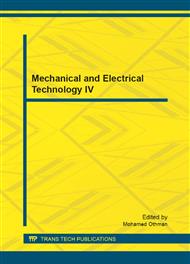p.2311
p.2315
p.2319
p.2323
p.2327
p.2334
p.2339
p.2343
p.2348
EBD Control Research on Bisectional Roads for Electric Vehicles on Energy Regenerative and Feedback Friction Integrated Braking
Abstract:
Project the integrated braking system for electric vehicles based on in-wheel motor and friction brake. Set up the integrated system dynamic model based on energy regenerative and feedback friction integrated braking. Come up with EBD control strategy on bisectional roads based on ABS system. Establish the dynamics simulation system and EBD control simulation system for the electric vehicles with the integrated braking system based on Matlab/Simulink. Simulate and analyze EBD control performance of the integrated braking system on bisectional road straight condition aimed at Chery A3 sedan. The study results indicate that the EBD control performance of electric vehicle with the integrated braking system has a high braking energy recovery ratio, braking efficiency and braking stability.
Info:
Periodical:
Pages:
2327-2333
Citation:
Online since:
November 2012
Authors:
Keywords:
Price:
Сopyright:
© 2012 Trans Tech Publications Ltd. All Rights Reserved
Share:
Citation:


